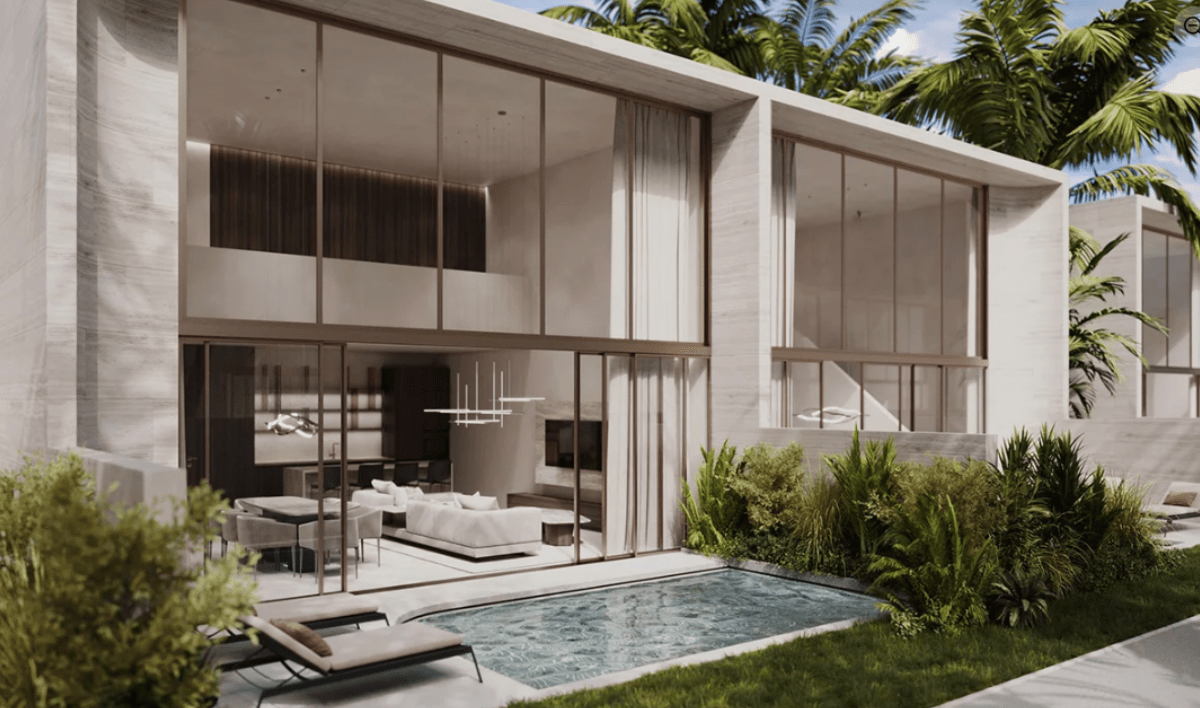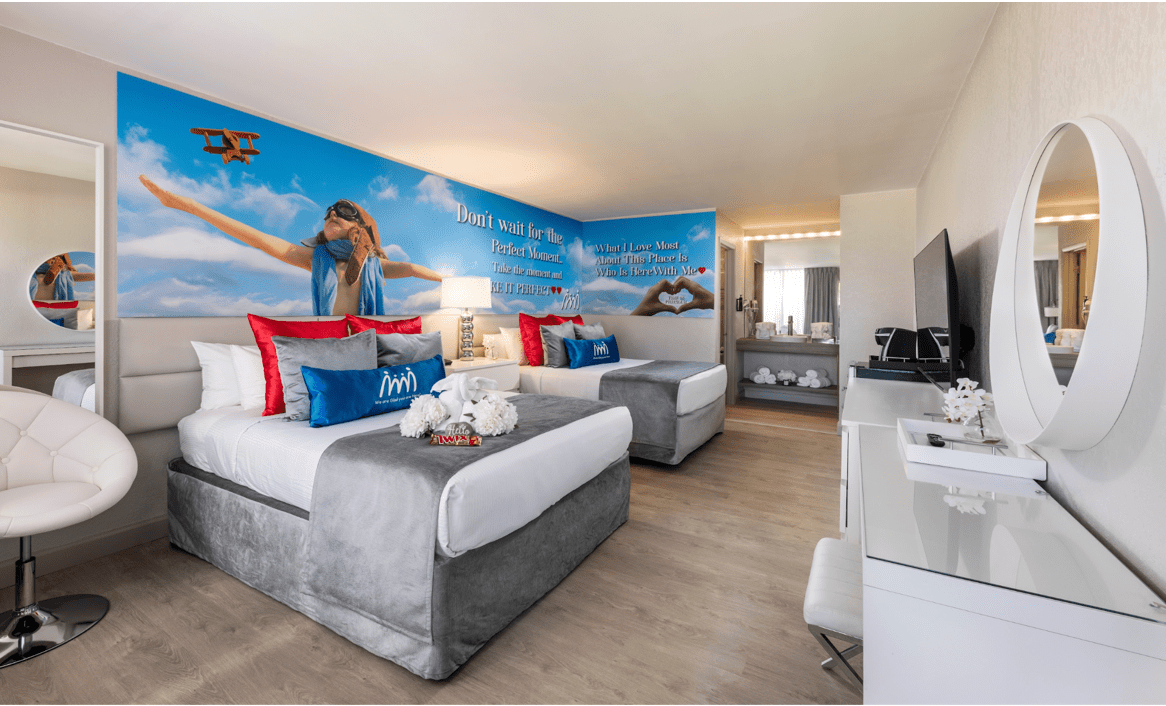Lifestyle
Inside Pulau Villas: Founder Michael Gor Talks The Ins and Outs of Investing in Paradise

While Bali’s beauty is no secret, finding the perfect investment here can be challenging. Pulau Villas, a new development company, has mastered the balance of flexibility and stability in Indonesia’s thriving real estate market. Founder Michael Gor shares his insights on what differentiates it in Bali’s competitive property scene.
Q: First of all, thank you for letting us interview you. Can you share what inspired you to start Pulau Villas? How did the idea come about?
MG: Pulau Villas was inspired by a desire to combine luxury living and investment opportunities in one of the world’s most beautiful locations.
Bali has always been a popular destination for tourists and expatriates. Still, I noticed a gap in the market for high-quality, long-term residential properties that also offer strong investment potential. The idea was to develop a project that caters to both short-term tourists and long-term residents, providing a living and investment experience unlike any other.
Q: Can you describe the features and amenities that set Pulau Villas apart from other luxury properties in Bali?
MG: Our attention to detail sets us apart. Each villa is designed for privacy, featuring private pools, customizable spaces, and ocean views for the three and four-bedroom units.
Our architect, Nicolas Pototskiy, designed the villas so that residents could enjoy a serene and exclusive environment. Our villas are also fully furnished and ready for immediate occupancy, which means clients do not need to worry about interior design and decor.
We also offer comprehensive property management services for a 5-star living experience. Whatever the clients need, whether it is property maintenance, tenant acquisition, rent collection, or administrative tasks, we can provide it.
Q: How do European construction standards influence the quality and durability of your villas?
MG: These standards ensure high levels of waterproofing, mold resistance, and overall durability, particularly important in Bali’s tropical climate. Following these standards helps improve the long-term value of our villas.
Q: What makes the location near Melasti Beach so special, and how does it enhance the living experience for residents?
MG: Melasti Beach is one of the most beautiful beaches in the world, and we are located just two minutes from it.
The area is also surrounded by luxury hotels, such as Bulgari, Kempinski, and Alila Villas, as well as the renowned Savaya Beach Club. This location provides breathtaking views and places residents near the island’s best amenities and services, which enhances the overall living experience.
Q: How does Pulau Villas cater to both short-term tourists and long-term residents?
MG: The property is designed to be versatile. For tourists, our villas offer a private retreat with all the amenities of a top-tier hotel. For long-term residents, the villas provide a comfortable and spacious living environment that they can call home.
Q: Can you explain your flexible payment plans and how they make luxury real estate more accessible?
MG: Of course. When I started Pulau Villas, I wanted to make luxury real estate more accessible to more investors. This is why we offer a one-year installment plan with a 20% down payment, followed by multiple installments. This way, buyers can spread the cost over a manageable period, reducing the initial financial burden. In contrast, many other developers in Bali require a higher initial payment, typically around 30%.
Q: How do you see the trend of remote work influencing the demand for properties like Pulau Villas in the coming years?
MG: The remote work trend influences the demand for properties like ours. As more professionals work from anywhere, there is also more demand for long-term stays in beautiful locations like Bali.
We expect this trend to continue growing in the future. Should remote worker investors choose to work from a different place, they can easily rent their villas for passive income.
Q: What are the key benefits of the long-term leasehold security that Pulau Villas offers investors?
MG: Unfortunately, Bali’s estate market is notorious for shorter and less secure lease terms. However, our villas come with a 28-year leasehold, with a guaranteed extension of 25 years. We ironed this out early in the process to give our clients a more stable investment.
Q: What are your plans for Pulau Villas, and how do you anticipate its growth in the next five years?
MG: We have exciting plans for Pulau Villas. In the next five years, we plan to expand our portfolio by developing similar luxury properties in other high-demand areas in Bali and Indonesia.
We also plan to incorporate more sustainable building practices and green features into our developments. This is to respond to the growing demand for eco-friendly properties.
Paradise is no longer just a vacation destination. With Pulau Villas, it has also become a sensible investment choice. For investors wary of market volatility, the new development provides a tangible asset that can act as a revenue stream. Whether owners want to use it for short-term vacation rentals, long-term leases to expatriates, or personal use, these villas offer flexibility that adapts to changing market conditions and personal preferences.
Visit Pulau Villas to learn more.
Lifestyle
How Magic Moment Resort Became the Pioneer of a New Era: The First-Ever Dazzler Select by Wyndham

In Central Florida’s packed landscape of family hotels and theme park lodgings, a unique kind of property has emerged. Magic Moment Resort & Kids Club in Orlando is earning attention from traveling families for a simple reason. It delivers joy, warmth, and convenience at a smart value that keeps Disney dreams accessible rather than overwhelming.
By joining Wyndham, Magic Moment Resort unlocks the strength of a global powerhouse, gaining worldwide visibility, advanced technology, and access to Wyndham Rewards, the largest hotel loyalty program on the planet. This strategic move expands its reach, builds guest trust, and amplifies its impact, all while preserving the unique identity that sets it apart.
Just a short drive from the gates of Walt Disney World, the resort sits along the palm-framed stretch of West Irlo Bronson Memorial Highway. The location has long been known for its tourism bustle, yet Magic Moment has carved out a softer identity. It feels playful and colorful, but also intentional. It is designed by a family for other families, and that perspective shapes every experience on the property.
A Philosophy Rooted in Family Connection
Magic Moment Resort was built with a belief often forgotten in today’s tourism industry. Family vacations should feel uplifting instead of stressful, and affordability should not come at the expense of comfort or creativity.
Check-in feels more personal than transactional. Parents arrive with strollers, snacks, and tired children. The staff seems to understand this rhythm instinctively. The energy is warm, the pace is easy, and the tone is set long before anyone even enters the room.
Unlike competing hotels that charge a steep premium for proximity to the parks, Magic Moment focuses on smart value without compromise. Its pricing strategy is refreshingly straightforward. Families can stay five minutes from Disney without draining their travel budgets. For many guests, that difference helps shift resources from hotel costs to experiences. It means more character breakfasts, more souvenirs, and more freedom to enjoy the parks without financial tension following every decision.
Spaces Designed for Children and Considerate of Parents
Magic Moment is filled with color, but nothing feels overstimulating. Instead, the resort offers a sense of wonder scaled to a child’s imagination.
The themed family rooms are a highlight. Children step into rooms that feel lighthearted and whimsical, yet parents appreciate that they are also functional and comfortable. It is the atmosphere of a themed suite without the theme park price.
Its Kids Club and Teens Club reflect that same thoughtful balance. These spaces invite exploration and creativity for children and provide a nurturing level of supervision. Parents can enjoy an hour by the heated pool, relax in a shaded cabana, or simply take a quiet moment while knowing their children are safe and engaged.
The resort’s grounds encourage slow mornings and gentle afternoons.There’s a 30,000 sqf outdoor playground as well as peaceful corners for parents. Importantly, families are not asked to pay additional fees to enjoy them. Magic Moment’s amenities feel generous rather than transactional.
Unforgettable Days at the Parks
For families navigating a Disney vacation, convenience is often the true luxury. Magic Moment delivers this with a complimentary delicious hot breakfast that encourages everyone to sit and enjoy the start of the day rather than rush through it.
Transportation to the parks is included, which removes one of the most common stress points for visiting families. There is no parking lot maze and no long lines at the toll booths. Guests simply board the shuttle and begin their day with ease.
When the sun sets and everyone returns from a day of rides and parades, the resort becomes a place to unwind. Children head straight for the pool. Parents sip Starbucks coffee. The atmosphere is relaxed and bright, and the resort feels like an extension of the Disney experience rather than a pause from it.
A Value That Resonates with Families
What truly elevates Magic Moment is the balance it achieves between smart value and experience. The resort has cultivated a loyal following because guests feel they receive more than they pay for. More thoughtful design. More space for connection. More comfort without excess.
Affordability here does not signal minimalism. Instead, it allows families to breathe. It creates space for shared moments that are often overlooked in the rush of theme-park vacations. Children play freely. Parents unwind without guilt. Families spend more time together and less time navigating logistics.
A Resort Built with Heart
Magic Moment Resort & Kids Club stands out in a region overflowing with hospitality options. Its charm is not rooted in extravagance. It is grounded in sincerity. It reflects the belief that family travel should feel joyful, accessible, and full of color.
For families planning a Disney visit, it represents more than a place to sleep. It is a retreat where memories can form in the quiet moments as much as in the thrilling ones.
At Magic Moment, the greatest luxury is not an amenity. It is the feeling of being exactly where you are meant to be, together.
-

 Tech5 years ago
Tech5 years agoEffuel Reviews (2021) – Effuel ECO OBD2 Saves Fuel, and Reduce Gas Cost? Effuel Customer Reviews
-

 Tech6 years ago
Tech6 years agoBosch Power Tools India Launches ‘Cordless Matlab Bosch’ Campaign to Demonstrate the Power of Cordless
-

 Lifestyle6 years ago
Lifestyle6 years agoCatholic Cases App brings Church’s Moral Teachings to Androids and iPhones
-

 Lifestyle5 years ago
Lifestyle5 years agoEast Side Hype x Billionaire Boys Club. Hottest New Streetwear Releases in Utah.
-

 Tech7 years ago
Tech7 years agoCloud Buyers & Investors to Profit in the Future
-

 Lifestyle5 years ago
Lifestyle5 years agoThe Midas of Cosmetic Dermatology: Dr. Simon Ourian
-

 Health7 years ago
Health7 years agoCBDistillery Review: Is it a scam?
-

 Entertainment6 years ago
Entertainment6 years agoAvengers Endgame now Available on 123Movies for Download & Streaming for Free
